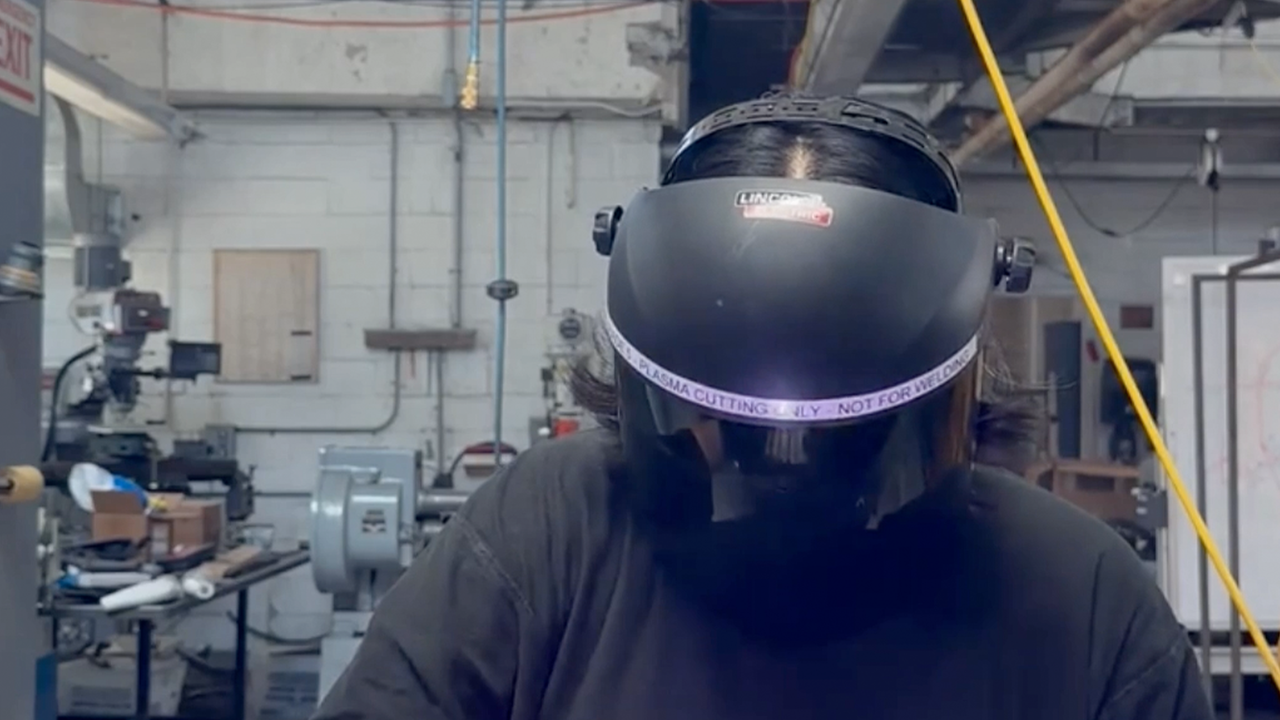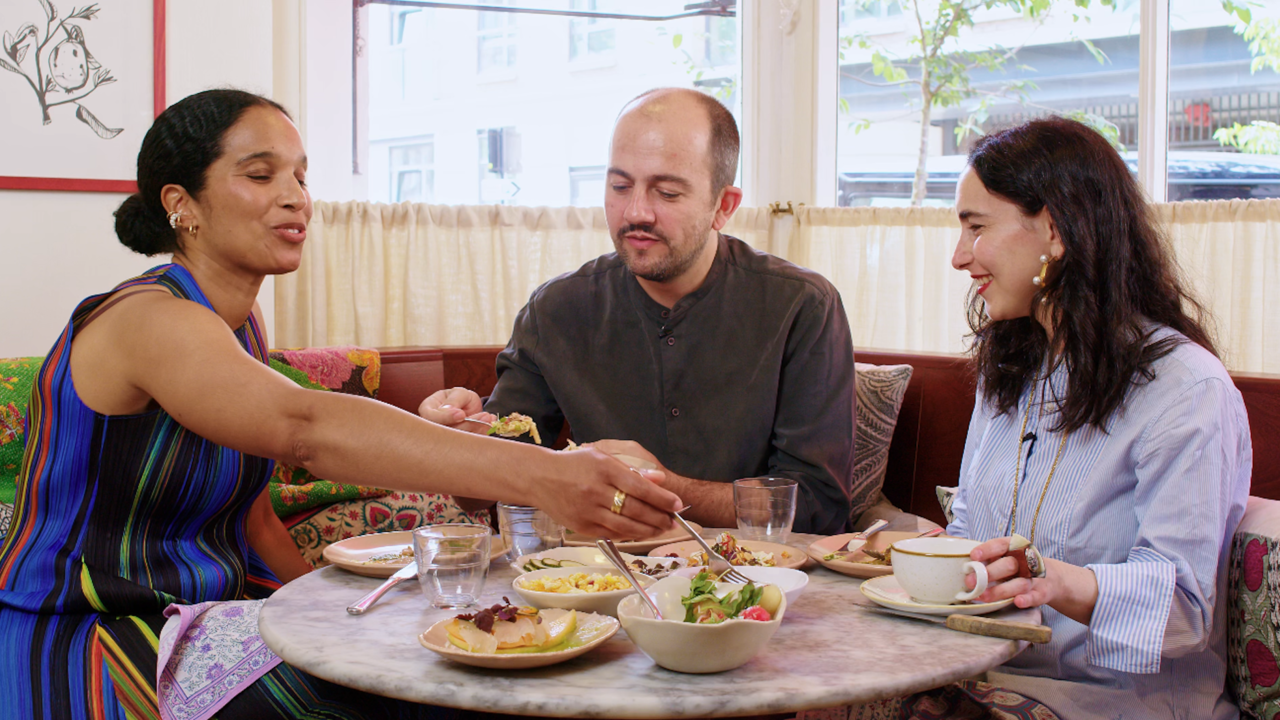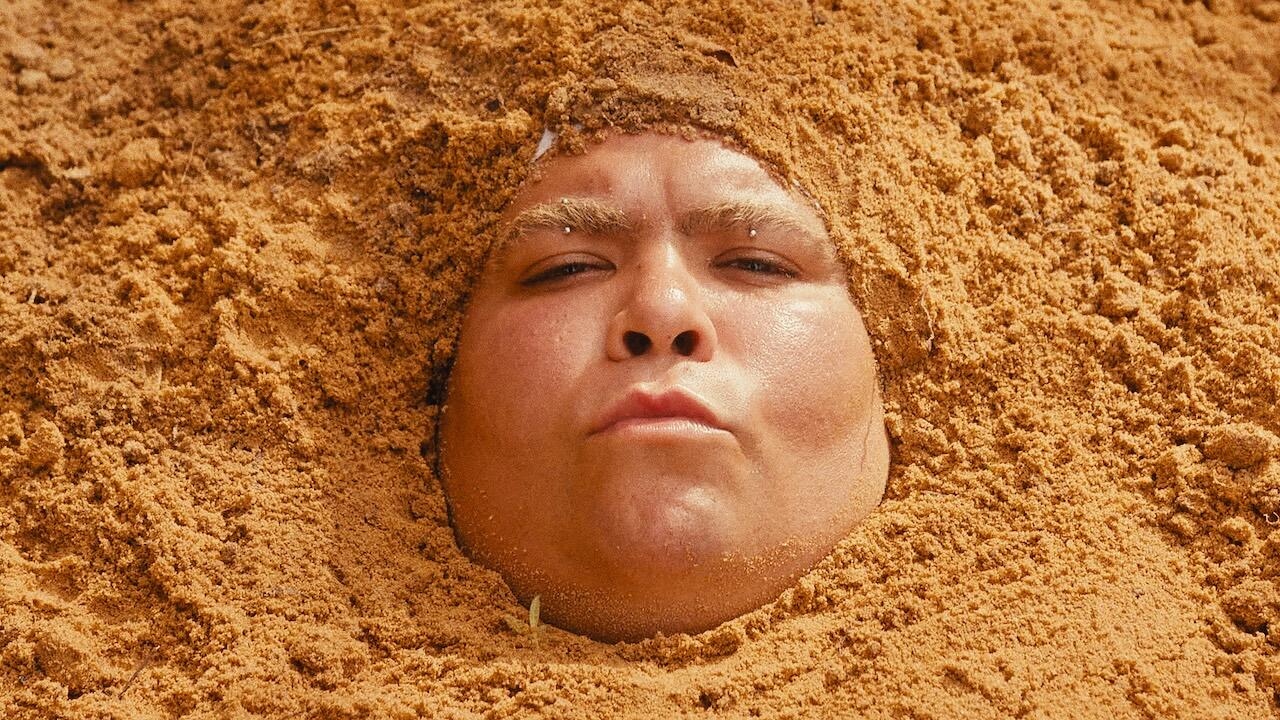Marlene Smith and Lubaina Himid on Friendship and Collaboration
Ahead of Smith’s show in London, the two artists discuss their histories and the fear and excitement of creating new works
Ahead of Smith’s show in London, the two artists discuss their histories and the fear and excitement of creating new works

Lubaina Himid How are you feeling in the run-up to your show, ‘Ah, Sugar’, at Cubitt, London?
Marlene Smith I am equal parts excited and terrified! The two emotions keep propelling me through the process of making.
LH I think that terror never truly goes away, no matter how small or large the project. I get frightened that the work is actually rubbish, that I’ve lost the ability to tell what to leave out and what to keep in. What are you working on at the moment in relation to ‘Ah, Sugar’?
MS For a while, I’ve been trying to make work with fondant icing that is as delicate as possible without breaking. I want to imprint it with some crochet pieces that belonged to my mum. It occurred to me that, if I got myself a mangle – an old housekeeping device used to squeeze the water out of wet laundry – it would help me to manipulate these slabs of icing. I want every piece to look uniform but also to be highly individual and to have a personality, to be a kind of embodiment of a woman. I’m placing a lot of demands on this material.
There are days when I think: ‘This is so brilliant, what a great idea!’ Then there are other days when I ask myself: ‘What the hell do you think you are doing with this stuff? You’re going to have all this work that’s made in icing sugar, which is not going to last forever, so who’s going to buy it? Should I be making more sculptural works? Should I do more drawing? Should I, should I, should I?’

LH What you’ve got, then, is something that’s clearly been manipulated by you, either with a rolling pin or with a mangle, but certainly with your hands. And you’ve got something that everybody, from the age of nine to 90, wants to lick, even eat. Then you’ve also got something that belonged to your mother imprinted onto the icing sugar like a doily, leaving behind the trace of your mother’s touch. That’s a quality you could never achieve with painting or drawing. In the gallery, people won’t be able to touch these works, but they will feel a strong urge to do so, connecting to the way you touched the works and the way your mum touched you before she passed away. These sculptures contain all the layers of you two being the same, yet different.
MS You hit on a lot of things when you mention those layers. The smell and the dust that comes off these icing-sugar pieces is really important to me: I want people to desire the works. Years ago, I went to an Anya Gallaccio show at Ikon Gallery, Birmingham, where she had coated the walls in chocolate for her piece Stroke [1993]. I remember the overwhelming desire I had to go up to the walls and lick them, offset by the revulsion I felt at the thought of how many people had already done so.

LH Do you see your work with icing sugar as a form of archive, or would you describe it as a sculpture? Some objects have the ability to cast your mind back to a time before the present moment and the room in which you find yourself.
MS I would describe these works as sculptures rather than archives, but I do have a strong relationship with archives and I’m fascinated by how they interplay with memory. When my work Good Housekeeping III [1985/2023] was included in Tate Britain’s recent exhibition ‘Women in Revolt! Art and Activism in the UK 1970–90’, I was interested to observe how its meaning changed in a different context. So, I’m trying to follow my instinct and have confidence in that and not get into my head too much about what other people are expecting.

LH It sounds like you’re experimenting with materials and ways of working.
MS One of the things that I have absolutely adored about getting back into my practice is having a studio for the first time. I only got a studio in 2022, so it’s a new way of working for me. Everything I made in the 1980s and ’90s, I did in the living room or at the end of the kitchen table.
‘I’m trying to follow my instinct: to have confidence and not get into my head too much about what other people are expecting.’
LH You have no idea how many times I’ve had to explain this to people. But that’s where most of us were making our work, particularly as Black artists.
MS At first, having a studio felt like rambling around in this big playroom, and I was a little bit intimidated by it. I just needed to cross that threshold and give myself permission to play. When I was remaking Good Housekeeping III – which I originally conceived for your 1985 show ‘The Thin Black Line’ at the Institute of Contemporary Arts in London – I remembered the excitement, for the first time in so many years, of plunging my hands into plaster. I was using household plaster that, when you add water to it, gives off a little heat. I’d entirely forgotten about that sensation. Having a studio also gives me the space to stand back from whatever I’ve made, to puzzle at it, to think about what it’s done and to think about what my next move might be. I live in a rented apartment which is carpeted, so having a place where I can make a mess is important to me.
I’m working with some of the same materials that I used for Good Housekeeping, just because I want to see where the next iteration of that piece takes me. I’m also going to be working with the photographer Ajamu again. I started having a recurring dream about my mum, so I want to shorthand some of that and do some studio work with Ajamu, where I’m wearing particular things and making certain gestures. He’s a good person to play with. His studio is a real playroom.

LH Yes, because his practice is full of performance and gesture. Your friendship is very special – you’ve had this unofficial collaboration for 35 years – and I imagine you talk about all kinds of things together. What impact has that had on your practice?
MS When I first met Ajamu in 1989, he was at the beginning of his practice as a photographer. He’s a bit of a maverick whereas, having been a member of the Blk Art Group, I’d become somewhat institutionalized in group thinking, rather than allowing myself to be my own artist. We’ve always had the most interesting conversations: we talk a lot about gender, sex and relationships, which are very much part of his practice. There are also times when we are aware of how we butt up against each other and don’t quite agree.
One of the things that I get from Ajamu is his playfulness and his willingness to break down barriers: he’s never content with doing what he’s supposed to be doing. It’s great now, looking back, that we have 40 years’ worth of practice together. But, as the conversation has unfolded between us, it’s always been about the next challenge: so we’re doing this now, but what does that mean and where can we take it?

LH Ajamu’s work invariably prompts a visceral response. You might be looking at a simple piece of paper, but he makes you feel. Your work has the same effect, so maybe that’s something which stems from your conversations. I always find it interesting to know who artists are talking to – not necessarily just in person, but also which poets they are reading or what music they are listening to; where they find peace and solace.
I realized very late in life that having a studio was also about allowing a home to be a home, that making work somewhere else meant you could come home and not think about it again until the next day. I’ve never really weaned myself off that: I still make paintings in my house as well as in a studio somewhere else. The relationship between art-making and living – the eating, the music, the love, the pain – are intertwined but, sometimes, it’s good to separate them.
MS There’s a balance to be found between embracing the unknown and retaining complete control of the creative process. The point at which I want to be totally in control is during the install. How the work fits into the space – where you’re leading the audience and how they encounter things – is important to me. I see Cubitt as a big, open box that needs some objects in it to break it up.

LH We both showed our work in museums and art centres before we exhibited in galleries, which quite often are these big, open spaces that you feel you have to do something with. I suspect we both love to have control over the install because we’ve worked as curators, with other people’s work as well as our own, and so we want to create a conversation with the audience. It’s like making work for a performance, with the performance being the audience’s engagement. The exciting and dangerous thing is that you can’t predict how people will respond because it’s entirely individual. That’s probably why you and I work in a slightly different way than the other artists we know: we’re like theatre directors or ballet choreographers who want to direct the scenario.
MS The pieces that I’m making can’t be wall-mounted, so we’re going to design some kind of structure to display them on.
LH You should put things in archive cases. Then everyone will lean over, expecting to see the minutes of a Blk Art Group meeting from 1981, but be confronted instead by a beautiful object. You’re not tempted to do that?
MS In some ways, I want to leave the Blk Art Group behind for now and just focus on the present moment and the future. I don’t want to be constantly looking back to or trying to recall what I was feeling 40 years ago.

LH I wasn’t in the Blk Art Group, but I remember thinking at the time: ‘Oh, these are clever artists! I’d like to have a conversation with Claudette Johnson and Marlene Smith.’ Earlier this year, as part of my show ‘Make Do and Mend’ at The Contemporary Austin, I was invited to give a talk at the gallery with another member of the Blk Art Group, Eddie Chambers. So there we were, 40 years later, not having the kind of conversation we’d usually have – what we’re working on, what shows we’ve got coming up, etc. – but giving this very public performance. It was peculiar, because I thought about all the arguments Eddie and I have had over the years – good and bad – as well as all the debates we could have had in that moment.
The exciting and dangerous thing is that you can’t predict how people will respond to the work.
The most liberating thing to have happened to me over the past couple of years is that I’ve been able to think about my work. I still find myself having to defend my practice and explain that, sometimes, the Black body isn’t present in my work because I don’t always want that to be the subject. It’s frustrating when curators say, ‘Oh, but we’d really like to see something you made in 1983.’ It sometimes feels as though there isn’t a space for us to be like other artists and just be excited about what we’re doing next and making art that may or may not be deemed successful. Of course, we can do this in our own spaces and in our own conversations. But, quite often, we are still restricted by cowardly contexts. Do you ever feel as though the art world perceives your practice through the lens of that particular period in history?

MS In 2021, as part of the Coventry Biennial, I did a talk with Keith Piper in which we discussed our experiences of the First National Black Art Convention at Wolverhampton Polytechnic in 1982. I actually found it fun to reminisce about that time. Then, last year, when Claudette had her solo show at The Courtauld Gallery in London, several people approached me to write about her work. It’s a process I’m really enjoying because it’s contemplative: I’m not trying to be academic; I’m just talking about the sensation of looking at her work and what it triggers for me, how it has been crafted and where the lines go. Just contemplating that magic is a nice exercise.
This article first appeared in frieze issue 244 with the headline ‘Conversation: Lubaina Himid and Marlene Smith’
Marlene Smith’s ‘Ah Sugar’ will be on view at Cubitt, London, from 22 August until 18 October
Lubaina Himid’s ‘Make Do and Mend’ will be on view at The Contemporary Austin until 21 July
Main image: Marlene Smith in her studio, 2024. Images commissioned for frieze. Photograph: Vanley Burke

























